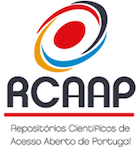An Atypical and Severe Case of Neuralgic Amyotrophy
DOI:
https://doi.org/10.25759/spmfr.267Keywords:
Brachial Plexus Neuritis, Shoulder PainAbstract
Neuralgic amyotrophy or Parsonage-Turner syndrome is an uncommon disorder, of unknown etiology, typically characterized by abrupt onset of shoulder and upper extremity pain followed by progressive neurologic deficits. An immune/autoimmune process seems to have more support in development of neuralgic amyotrophy. Neuralgic amyotrophy is a clinical diagnosis, however, further diagnostic studies can confirm clinical suspicion and help exclude other causes. The treatment consists predominantly in pain control and rehabilitation. Patients with neuralgic amyotrophy, can be evaluated by a wide range of clinical specialists in the early stage of disease before a correct diagnosis be made. This is a result of different phenotypes that this disorder exhibits, that complicate the diagnosis. It is important for clinicians to beware of the classic clinical manifestations that usually follow a characteristic clinical course of abrupt onset of shoulder girdle pain followed by progressive neurologic deficits as muscle weakness, amyotrophy and sensory abnormalities. We report the case of a 32-year-old man who had a severe bilateral and atypical shoulder involvement, that made the most probably diagnostic not so evident.
Downloads
References
van Alfen N. Clinical and pathophysiological concepts of neuralgic amyotrophy. Nat Rev Neurol. 2011;7:315-22.
Parsonage MJ, Turner JW. Neuralgic amyotrophy; the shoulder-girdle syndrome. Lancet. 1948;1:973-8.
Seror P. Neuralgic amyotrophy. An update. Joint Bone Spine. 2017;84:153-8.
Van Eijk JJ, Groothuis JT, Van Alfen N. Neuralgic amyotrophy: An update on diagnosis, pathophysiology, and treatment. Muscle Nerve 2016;53:337-50.
van Alfen N, van Engelen BG, Hughes RA. Treatment for idiopathic and hereditary neuralgic amyotrophy (brachial neuritis). Cochrane Database Syst Rev. 2009:CD006976.
van Alfen N, van Eijk JJ, Ennik T, Flynn SO, Nobacht IE, Groothuis JT, et al. Incidence of neuralgic amyotrophy (parsonage turner syndrome) in a primary care setting - a prospective cohort study. PLoS One. 2015;10:e0128361.
Gaskin CM, Helms CA. Parsonage-Turner syndrome: MR imaging findings and clinical information of 27 patients. Radiology. 2006;240:501-7.
van Alfen N, van Engelen BG. The clinical spectrum of neuralgic amyotrophy in 246 cases. Brain. 2006;129:438-50.
Tjoumakaris FP, Anakwenze OA, Kancherla V, Pulos N. Neuralgic amyotrophy (Parsonage-Turner syndrome). J Am Acad Orthop Surg. 2012;20:443-9.
Cup EH, Ijspeert J, Janssen RJ, Bussemaker-Beumer C, Jacobs J, Pieterse AJ. Residual complaints after neuralgic amyotrophy. Arch Phys Med Rehabil 2013;94:67-73.
Ayoub T, Raman V, Chowdhury M. Brachial neuritis caused by varicellazoster diagnosed by changes in brachial plexus on MRI. J Neurol. 2010;257:1-4.
Tsairis P, Dyck PJ, Mulder DW. Natural history of brachial plexus neuropathy. Report on 99 patients. Arch Neurol. 1972;27:109-17.
Smith CC, Bevelaqua AC. Challenging pain syndromes: Parsonage-Turner syndrome. Phys Med Rehabil Clin N Am. 2014;25:265-77.
Downloads
How to Cite
Issue
Section
License
Copyright statement
Authors must also submit a copyright statement (as seen below) on article submission.
To the Editor-in-chief of the SPMFR Journal:
The below signed author(s) hereby state that the article
________________________________________ (ref. MFR_________) is
an original unpublished work and all facts stated are a product of the author(s) investigation. This article does not violate any copyright laws or privacy statements. The author(s) also hereby confirm that there is no conflict of interest's issues in this article.
By submitting this article the author(s) agree that after publication all copyrights belong to the SPMFR Journal.
Signed by all authors
Date:
Names (capital letters):
Signatures:
The SPMFR Journal’s contents are follow a Creative Commons licence. After publication the authors can hand out the articles as long as the SPMFR Journal is credited.



